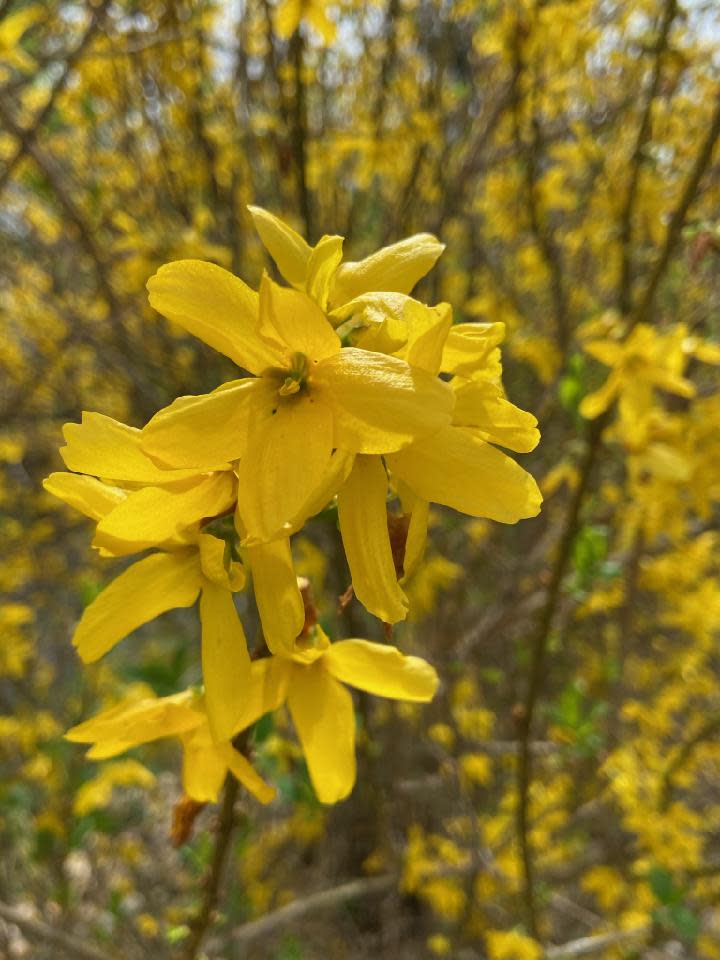Over the Garden Fence: Forsythia can flood spring gardens with color
This climate change, which has been underway in its subtle tones, has really brought to Ohio an early spring. We expect witch hazel and hellebores to bloom early. Daffodils and forsythia are almost a month early triggered by what some of us label a heat wave. We hold our breath and wonder what might be blooming in April in another month.
Forsythia is so often planted in a rows in hopes of its ability to form a privacy hedge. Our yard is a bit like that as shrub after shrub lines the east side of the property. This deciduous plant is held in place with stone. They are low maintenance yet fast-growing. Right now, the flowing, reaching, arching branches delight the eye and became extremely happy in those temperatures that ranged from 50 to 70 degrees last week.
My thought is that the long, graceful branching form is the best for these plants to show off brilliant yellow blooms. They were pruned last year but not with a buzz job approach.
The blooms precede the foliage so it is easy to enjoy them on their own merits. Bees and butterflies love forsythia. Forsythia is happier when it gets about six hours of sun. The plants tolerate acidic and alkaline soils. On slopes the shrubs become an erosion control factor. Along a fence or wall the shrubs, which can grow to 10 feet tall, will seem untrained and cascade over the walls.

So, the freedom and almost gone-wild look is favored for me. Think what this behavior could do for a large empty space in your yard. Golden yellow color brightens any stage of spring, none so much as the appendages of a healthy forsythia.
Characteristics that make the shrub a challenge
After all the praises, there are a few characteristics or behaviors that make this shrub a challenge. Remember, the shrubs grow fast. At first the fact that longer lower branches were dropping to the ground and rooting was not revealed to me. It was in the second year during my efforts to rake leaves away from the plants that rooting strength came to light. As each long branch was wrenched from the soil, roots were revealed at intervals. These were strong and healthy.
Grabbing pots, these were quickly potted up; so easy without making cuttings. These were robust, almost ferocious. In fact, after the pruning step late last spring, the pile of twigs sat there. Later those against the soil revealed rootings. Oh, my gosh.
So the biggest burden in having forsythia is getting it shaped annually and keeping it that way. Pruning should be done after the blooming period and before July. Any later than that you are removing next season's blooms. This will not kill plants but the blooming will be lessened.
Plant the shrubs 4 to 6 feet apart in fall giving them plenty of room. Dig a hole twice the size of the root ball. Set into the hole so the top of the root ball is flush with the earth. Water well to give them a good start. They enter dormancy. Never fear. They will grow and burst into golden beauties for many springs to come.
Mary Lee Minor is a member of the Earth, Wind and Flowers Garden Club, an accredited master gardener, a flower show judge for the Ohio Association of Garden Clubs and a former sixth grade teacher.
This article originally appeared on Bucyrus Telegraph-Forum: Forsythia blooms early in Ohio and requires certain care

